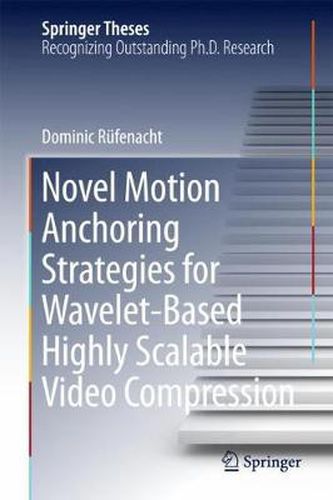Readings Newsletter
Become a Readings Member to make your shopping experience even easier.
Sign in or sign up for free!
You’re not far away from qualifying for FREE standard shipping within Australia
You’ve qualified for FREE standard shipping within Australia
The cart is loading…






This title is printed to order. This book may have been self-published. If so, we cannot guarantee the quality of the content. In the main most books will have gone through the editing process however some may not. We therefore suggest that you be aware of this before ordering this book. If in doubt check either the author or publisher’s details as we are unable to accept any returns unless they are faulty. Please contact us if you have any questions.
A key element of any modern video codec is the efficient exploitation of temporal redundancy via motion-compensated prediction. In this book, a novel paradigm of representing and employing motion information in a video compression system is described that has several advantages over existing approaches. Traditionally, motion is estimated, modelled, and coded as a vector field at the target frame it predicts. While this prediction-centric approach is convenient, the fact that the motion is attached to a specific target frame implies that it cannot easily be re-purposed to predict or synthesize other frames, which severely hampers temporal scalability.
In light of this, the present book explores the possibility of anchoring motion at reference frames instead. Key to the success of the proposed reference-based anchoring schemes is high quality motion inference, which is enabled by the use of a more physical motion representation than the traditionally employed block motion fields. The resulting compression system can support computationally efficient, high-quality temporal motion inference, which requires half as many coded motion fields as conventional codecs. Furthermore, features beyond compressibility - including high scalability, accessibility, and intrinsic framerate upsampling - can be seamlessly supported. These features are becoming ever more relevant as the way video is consumed continues shifting from the traditional broadcast scenario to interactive browsing of video content over heterogeneous networks.
This book is of interest to researchers and professionals working in multimedia signal processing, in particular those who are interested in next-generation video compression. Two comprehensive background chapters on scalable video compression and temporal frame interpolation make the book accessible for students and newcomers to the field.
$9.00 standard shipping within Australia
FREE standard shipping within Australia for orders over $100.00
Express & International shipping calculated at checkout
This title is printed to order. This book may have been self-published. If so, we cannot guarantee the quality of the content. In the main most books will have gone through the editing process however some may not. We therefore suggest that you be aware of this before ordering this book. If in doubt check either the author or publisher’s details as we are unable to accept any returns unless they are faulty. Please contact us if you have any questions.
A key element of any modern video codec is the efficient exploitation of temporal redundancy via motion-compensated prediction. In this book, a novel paradigm of representing and employing motion information in a video compression system is described that has several advantages over existing approaches. Traditionally, motion is estimated, modelled, and coded as a vector field at the target frame it predicts. While this prediction-centric approach is convenient, the fact that the motion is attached to a specific target frame implies that it cannot easily be re-purposed to predict or synthesize other frames, which severely hampers temporal scalability.
In light of this, the present book explores the possibility of anchoring motion at reference frames instead. Key to the success of the proposed reference-based anchoring schemes is high quality motion inference, which is enabled by the use of a more physical motion representation than the traditionally employed block motion fields. The resulting compression system can support computationally efficient, high-quality temporal motion inference, which requires half as many coded motion fields as conventional codecs. Furthermore, features beyond compressibility - including high scalability, accessibility, and intrinsic framerate upsampling - can be seamlessly supported. These features are becoming ever more relevant as the way video is consumed continues shifting from the traditional broadcast scenario to interactive browsing of video content over heterogeneous networks.
This book is of interest to researchers and professionals working in multimedia signal processing, in particular those who are interested in next-generation video compression. Two comprehensive background chapters on scalable video compression and temporal frame interpolation make the book accessible for students and newcomers to the field.